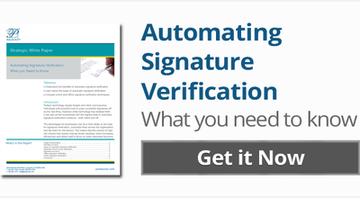Fraud prevention is not just for banks. Most associate the issues of fraud with financial-oriented companies such as banks, credit agencies and other fiduciaries. After all, many of us have perpetual free credit alerts due to all the data breaches.
Municipalities, state and local governments aren’t far behind on the list of targets for fraudsters. And why not? State and local governments spend a lot of money with thousands of different entities. Keeping track of all those transactions takes a lot of effort.
Recent Case of Fraud
Take, for instance, a recent case of fraud in Boulder, Colorado just a stone’s throw from Parascript headquarters. In this instance, a man was arrested in February for stealing over $800,000 from the local school district. He did this by impersonating a contractor doing work with the city.
The impersonator asked the city for forms to change the method of payment, according to affidavits. He then subsequently submitted the paperwork complete with a forged signature of the CEO of the construction company – one with the right first name, but a completely-illegible last name. All in all, four payments totaling just over $852,000 were sent to the fraudster who then wired money to Nigeria and wrote checks to himself, paying-off some student loans along the way.
Random and Skilled Forgeries
In the area of forgery, a signature with the wrong name is called a “random forgery.” This means that the forger just adds a signature to a check or important document, not knowing the real name (or perhaps armed with a partial name) or how the signature looks. They rely on lax protocols for verification of requests. In another incident in California, a fraudster stole over $1 million by copying a signature of an official from online records. This is called a “skilled forgery,” but the resemblance of the forged signature to the actual one can vary.
More and more, fraudsters are relying upon lax procedures to redirect government funds. It appears that a favored method is to request a change of payment information. This also occurred in another Colorado town that was bilked over $1.2M. In both cases, the victim of fraud only became aware when a payment inquiry was made by the valid vendor.
Local governments are already using automated signature verification for high profile operations such as elections and to verify signatures on ballot initiatives.
Fraud Prevention Measures
Local governments are already using fraud prevention measures, such as automated signature verification for high profile operations such as within elections and increasingly for verifying signatures on ballot initiatives. In both of these processes, 100% of the signatures can be analyzed against known authentic signatures to identify potential fraud – reducing a significant amount of workload and improving the speed at which these processes can be completed.
Signature Verification Automation
The same procedures can easily be applied to other processes that rely upon proactive review and verification of transactions. In the case of payment authorizations and other requests that require formal submission, the local government entity can compare data from executed contracts including signatures to ensure that a request is authentic. Doing so is a relatively low-cost solution to a potentially high-risk and publicly embarrassing incident.
###
If you found this article interesting, you might find this video and Automating Signature Verification: What You Need to Know ebook useful:


